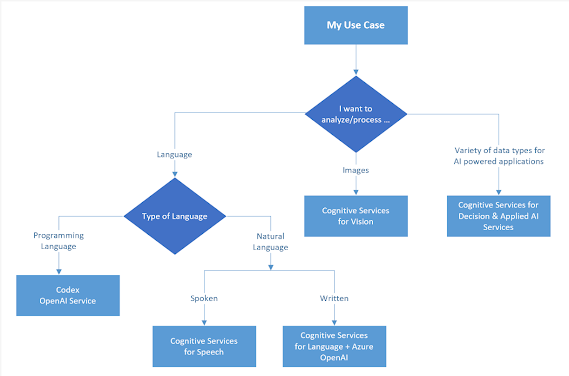Navigating Azure AI Services: A Comprehensive Guide to Choosing the Right Cognitive Service
Table of Contents:
- Introduction to Azure AI Services
- Categories of Azure Cognitive Services
- Language Services
- Speech Services
- Vision Services
- Decision Services
- Azure OpenAI Service
- Common Use Cases for Azure AI Services
- Key Selection Criteria for Azure AI Services
- Deploying Cognitive Services
- Individual Service Deployment
- Multi-Service Resource Deployment
- Memory Techniques and Mnemonics
- Story-Based Memory Technique
- Mnemonic Device for Azure AI Service Selection
- Conclusion
Blog Content:
1. Introduction to Azure AI Services
Azure AI services are cloud-based APIs that provide a range of pretrained models ready to be integrated into applications, requiring minimal development effort. These services are ideal for adding AI capabilities to your applications without the need for deep technical expertise in machine learning.
2. Categories of Azure Cognitive Services
Azure offers a wide array of cognitive services, which are divided into the following categories:
- Language Services: Used for natural language processing tasks like sentiment analysis, language detection, and translation.
- Speech Services: Enable speech-to-text, text-to-speech, and speaker recognition capabilities.
- Vision Services: Provide image and video recognition capabilities.
- Decision Services: Help with tasks such as anomaly detection, content moderation, and personalization.
- Azure OpenAI Service: Provides REST API access to advanced OpenAI language models.
3. Common Use Cases for Azure AI Services
Azure AI services are versatile and can be applied in various domains:
- Language Services: Automating customer support through sentiment analysis and question answering.
- Speech Services: Enabling voice commands and real-time transcription in applications.
- Vision Services: Automatically categorizing images and videos for easier content management.
- Decision Services: Identifying anomalies in financial transactions or moderating user-generated content.
- Azure OpenAI Service: Generating natural language text for chatbots or content creation.
4. Key Selection Criteria for Azure AI Services
When selecting the right service for your needs, consider the following:
- Nature of the Data: Are you processing spoken language, text, images, or other media?
- Customizability: Do you have your own data to train models, or do you prefer pretrained models?
- Deployment Needs: Do you require individual service deployment or a multi-service resource?
5. Deploying Cognitive Services
You can deploy Azure Cognitive Services in two main ways:
- Individual Service Deployment: Best for when you only need one specific service and want to manage it separately.
- Multi-Service Resource Deployment: Ideal if you are using multiple services and prefer to manage access and billing collectively.
6. Memory Techniques and Mnemonics
Story-Based Memory Technique: Imagine you're building an intelligent assistant that needs to handle multiple tasks—understanding spoken commands, analyzing text for sentiment, and recognizing images. Each task corresponds to a different Azure Cognitive Service, helping you remember their specific roles.
Mnemonic Device for Azure AI Service Selection: "SLVD-O"
- S: Speech Services for anything voice-related.
- L: Language Services for text and NLP tasks.
- V: Vision Services for image and video analysis.
- D: Decision Services for recommendations and moderation.
- O: OpenAI for advanced language models.
7. Conclusion
Azure AI Services offer a comprehensive suite of tools that enable developers to integrate sophisticated AI features into their applications with ease. By understanding the different categories of services, their use cases, and how to select and deploy them, you can leverage these tools to build intelligent, user-friendly applications that enhance productivity and user experience.


No comments:
Post a Comment